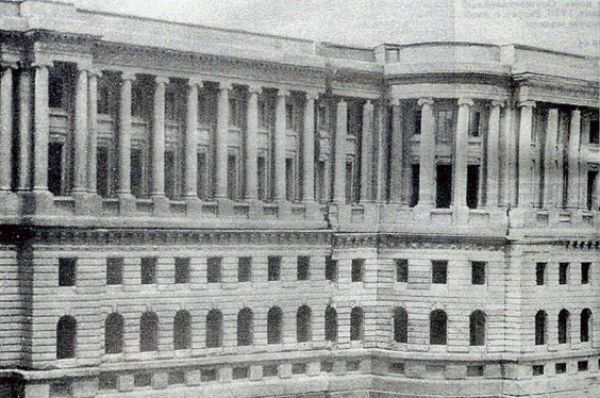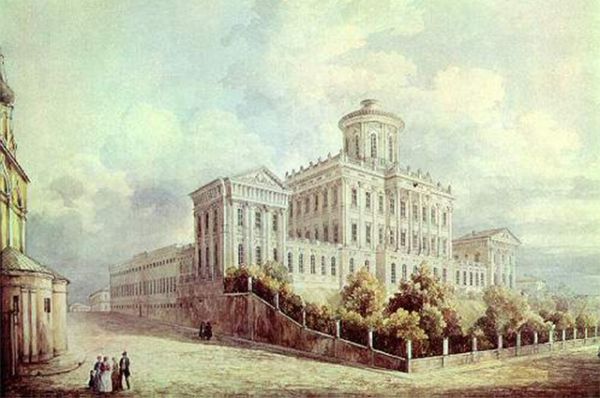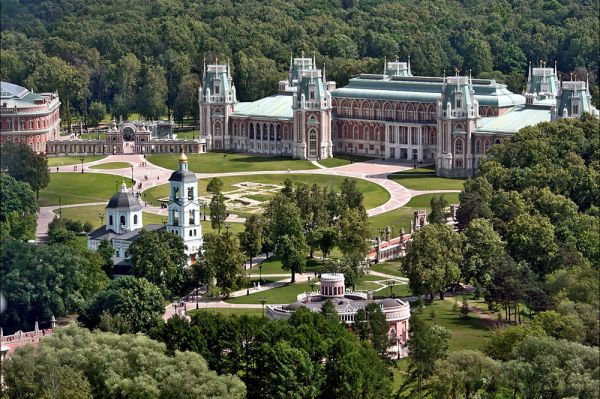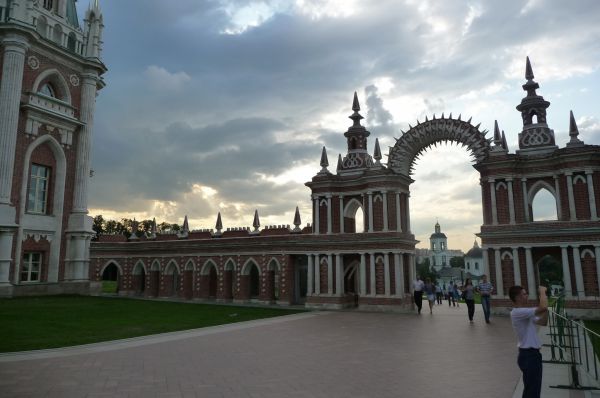Tsaritsyno. The tragic story of Moscow's most famous estate
The history of the creation of the Tsaritsyn estate is associated with the name architect Vasily Bazhenov. This talented architect was unable to fully implement almost any of his grandiose projects. The Tsaritsyno estate was no exception.
Queen's Wrath and Mercy
Vasily Bazhenov was born into the family of a deacon of one of the Moscow court churches. Since childhood, the boy showed talent as an artist and was noticed by the architect Dmitry Ukhtomsky, who took him on as a student. Later he received an excellent education: he was among the first students of the Academy of Arts established in St. Petersburg, and one of the first to be sent by the academy to study in Paris. Upon returning to Russia, he was treated kindly by the empress and began developing his main project - the Kremlin Palace. The project surpassed everything that was created in Europe at that time - both in grandeur and unprecedented courage. A groundbreaking ceremony for the palace took place, a design model was created, but things did not go further than that.
In 1775, the architect was entrusted with the construction of festive pavilions on the Khodynskoye field, where a celebration was to take place on the occasion of the conclusion of the Kuchuk-Kainardzhi peace in the Russian-Turkish war. Catherine II liked the buildings, and soon Bazhenov was entrusted with the construction of the palace ensemble in Tsaritsyn. The young architect was inspired by the idea of creating a new, special architecture, the likes of which Russia had never seen before.
Photo: Press service of Tsaritsyno Park / Dmitry Shchelokov
According to his idea, the Tsaritsyn estate was to become a single complex, in which the empress’s palace was also not the dominant feature. By 1785, the construction of the imperial residence was completed, only the interior decoration remained. Catherine II decided to familiarize herself with the progress of construction and arrived in Moscow. Arriving in Tsaritsyno, she examined the residence and the almost completed palaces and was indignant: the vaults seemed too heavy to her, the rooms too low, the boudoirs too cramped, the staircases too narrow. She decided that it was generally impossible to live in them. Bazhenov was removed from further construction, and the creation of a new project was entrusted to his student, Matvey Kazakov, which especially hurt the architect. There are many versions of why Catherine did not like the palace. According to one of them, the architect’s intrigues and Masonic connections were to blame; according to the other, Bazhenov’s rebellious disposition and the fact that he constantly went beyond the budget.
Photo: Press service of Tsaritsyno Park / Dmitry Shchelokov
Nature of Black Mud
The natural heritage of the estate is one of its most important treasures. It is thanks to him Catherine II this place was chosen to create a residence. The village of Black Mud (as Tsaritsyno was then called) at different times belonged to noble families - the queen Irina Godunova, Streshnev, Golitsyn, Kantemiram. In May 1775, Empress Catherine II visited the Kantemirov estate, was fascinated by the beauty of this place and immediately bought the estate. During construction, Bazhenov did not make major changes to the landscape, but rather, on the contrary, integrated the buildings into the natural environment. When creating the park, he was helped by gardeners from abroad, who were able to create a harmonious park. In one of his letters in 1784, the architect wrote: “Over the nine years [since the start of construction of the estate], Tsaritsino has become so decorated with pleasant groves and views of various paintings that there is hardly such a place in England itself.” A cascade of ponds with a dam was created here during Vasily Golitsyn at the end of the 17th century. Under him, an island was created on one of the ponds, which still exists today.
Photo: Press service of Tsaritsyno Park / Dmitry Shchelokov
The Tsaritsyn ponds were and remain a favorite place for Moscow fishermen and have long been overgrown with fishing legends. So, Mikhail Pylyaev in the article “Old Moscow” in 1891 he wrote: “In 1886, a large sturgeon with an earring in the lip, released under Catherine II, was caught here by a tenant of the Tsaritsyn ponds.” This is how Mr. Kureshin described this incident in his “Moscow feuilleton”: “When they dragged sturgeon in nets, the tenant was delighted, but then the district overseer intervened in the matter. Bearing in mind the historical significance of the sturgeon, the warden did not allow the tenant to take it, but suggested the following: arrange a special vessel for the sturgeon, assign guards for protection at the expense of the tenant, and store the sturgeon until he, the warden, reports to the specific office, and the office communicates with the palace department, etc., until, in a word, the final order of the highest authorities follows. After thinking, the tenant scratched his head and released the sturgeon in all four directions, and a long protocol was drawn up regarding all of the above, however, no longer than the sturgeon, which was 2 arshins 11 vershoks.”
Photo: Press service of Tsaritsyno Park / Dmitry Shchelokov
Romantic ruins
In the 19th century, the Cossack Grand Palace and Bazhenov’s buildings were rebuilt, destroyed, some were covered with moss and overgrown with bushes. The estate, which had fallen into disrepair, was so beautiful and touchingly sad that legends arose according to which Bazhenov deliberately did not complete the palace for the empress’s grandchildren, so that it would be more convenient for them to climb.
Tsaritsyno Park. Photo: Press service of Tsaritsyno Park / Dmitry Shchelokov
By the 20th century, Tsaritsino had completely fallen into disrepair. The first attempts to turn the estate into a museum appeared in 1960. In the mid-1970s, the first projects were ready, but due to their complexity, the restoration dragged on for years. In the 1990s, restoration work proceeded extremely slowly due to lack of funds. In addition, many did not see the point in completely restoring Tsaritsino from the ruins: it was impossible to recreate Bazhenov’s plan, and in the ruins themselves they saw a symbol of the romantic era in which the architect lived. However, after the complex was transferred to the ownership of the city in 2005, large-scale restoration work began, and two years later Tsaritsyno was completely reconstructed.
Photo: Press service of Tsaritsyno Park / Dmitry Shchelokov
Today Tsaritsyno is not just a museum-reserve, but a huge cultural center. The building of the large palace displays exhibitions dedicated to the history of the estate, Empress Catherine II, and archaeological finds discovered in the park. Art exhibitions dedicated to both the art of old masters and the latest conceptual movements are held here. Tsaritsyno is the largest concert venue in Moscow; concerts of classical and jazz music are held in the halls of the Grand Palace and the Atrium of the Bread House. The Tsaritsyno Museum-Reserve is a popular children's educational center.
 © Public Domain / Illustration from the book “Brothers. History of Freemasonry in Russia"
© Public Domain / Illustration from the book “Brothers. History of Freemasonry in Russia" © Public Domain / View of Mokhovaya Street and Pashkov House, drawing by G. Baranovsky, 1840s
© Public Domain / View of Mokhovaya Street and Pashkov House, drawing by G. Baranovsky, 1840s © Commons.wikimedia.org / Sergey Korovkin 84
© Commons.wikimedia.org / Sergey Korovkin 84 © Commons.wikimedia.org / Marina Lystseva
© Commons.wikimedia.org / Marina Lystseva ©
©
